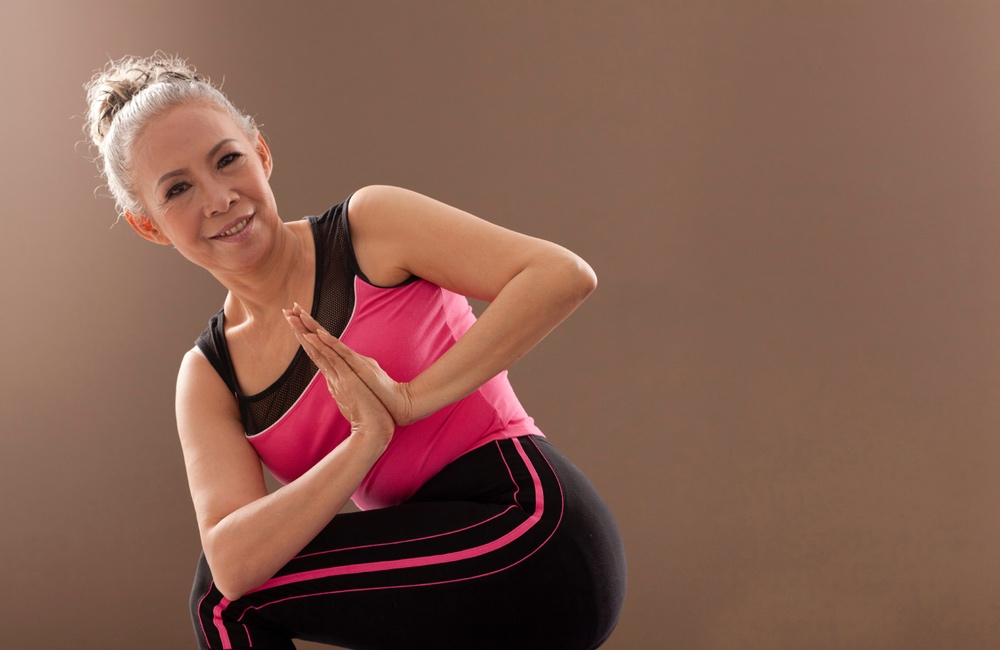It’s not news that growing older comes with physical and mental challenges. Frailty is one. Weakness, slow walking speed, low physical activity, self-reported exhaustion and unintentional weight loss are common signs.
Seven to 12 percent of folks 65 years and older are considered frail, and the condition affects up to half of adults 80 years and older. That’s why the prevention and management of frailty is a high priority in public health and clinical practice. So, what helps reduce or even prevent the condition as we get older? According to a recent study published in Annals of Internal Medicine, the answer may be yoga.
Researchers from Brigham and Women’s Hospital and Harvard Medical School came to this conclusion after they reviewed the findings of 33 randomized controlled trials which included nearly 2,400 participants 65 years or older.
The goal was to evaluate the benefit of yoga-based interventions on frailty in seniors. They considered yoga’s effect on gait speed, balance, grip strength, leg strength and endurance, and measures of overall physical performance taking into account strength, endurance and balance.“It’s never too late to start a yoga practice or exercise regimen to help with your overall health status in your later years.”
“When you look a whole person, especially an older person, there may be a number of difficulties that each contribute to frailty,” first author of the study, Julia Loewenthal, of the Division of Aging at Brigham and Women's Hospital, and Harvard Medical School, said in a press release. “Since yoga is an integrative practice that impacts multiple areas of health, it may be effective for preventing a syndrome like frailty, which has multiple causes.”
There was moderate evidence that yoga improved gait speed, lower body strength (which helps us rise from a chair) and endurance when seniors doing some form of yoga were compared to education-only, or inactive control groups. The authors emphasized the clinical importance of this finding given prior research showing that slower walking speeds are connected to a higher risk of death in older adults. However, yoga’s benefit for balance and handgrip strength were less impressive.
Still, the findings offered hope. “There’s potential for movement-based mind-body practices to be really helpful for promoting healthy aging over the lifespan because they provide a physical and cognitive health benefit, but also because they have a spillover effect that can lead to having a healthier lifestyle overall,” Loewenthal said. “It may be helpful to get involved in a healthy practice like this at a younger age, but with that said, we still saw clinically meaningful results in an older population. It’s never too late to start a yoga practice or exercise regimen to help with your overall health status in your later years.”
There are several different types of yoga practices: Hatha, Iyengar, Vinyasa, hot yoga and Ashtanga. The authors of the study recommend an Iyengar-based style for seniors because it is a gentle approach emphasizing precise body alignment and the use of props like blocks that make it easier to get into a position.
Other options for seniors — depending on individual limitations — include chair yoga and restorative yoga. Both focus on slow and controlled movements. No matter what yoga style you choose, the key is to work within the limits of your body to avoid injury. To help to develop a consistent practice, aim to do it a few times each week, ideally in a class setting for at least one of those sessions. If you are housebound there are live online classes to join which still provide a sense of community.
Try a yoga pose at home. You can do this gentle twist while sitting in a chair. Here’s how:
- Sit sideways on the chair, facing to the left.
- With your hands on either side of the back of the chair, twist your torso toward the left, holding onto either side of the back of the chair, for a spinal twist.
- Lengthen your spine on each inhale and twist on each exhale for five breaths.
- Move your legs around to the right side of the chair and repeat the twist to the right side.





